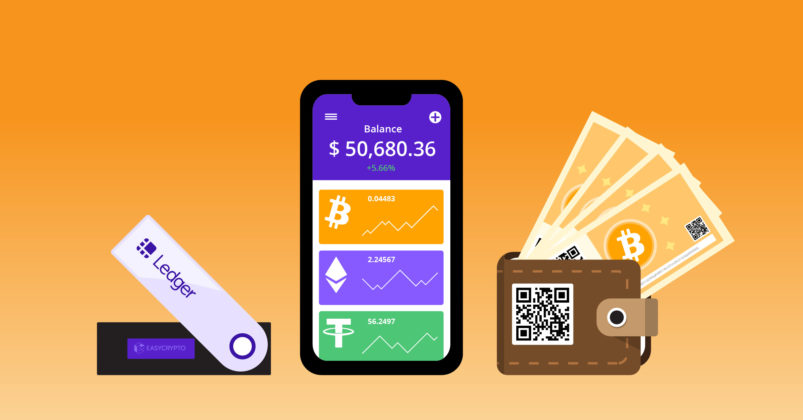Litecoin LTC: Litecoin - A decentralized digital currency based upon the Bitcoin protocol, however with key differences such as a faster block generator time and a distinct algorithm to hash.
Monero (XMR): Monero is a cryptocurrency focused on privacy that utilizes a variety of features including stealth addresses and ring-signatures to increase the privacy and security of transactions.
TRON (TRX),: TRON is a decentralized crypto-blockchain platform, and cryptocurrency, is designed to facilitate the creation and use of decentralized apps (DApps). The platform also supports content sharing. TRON's goal is to create a global digital content entertainment platform that utilizes blockchain technology and peer-to-peer networking technology (P2P). See the top usdt wallet app for more recommendations.

Differences:
Bitcoin is a decentralized digital currency. Ethereum is a decentralized platform that allows the creation of custom tokens.
Monero is concerned with privacy and security. TRON, however, is aiming to establish an international online entertainment platform.
TRON employs a Delegated Proof of Stake (DPoS) consensus mechanism, while other cryptocurrencies employ a Proof of Work (PoW) or Proof of Stake (PoS) mechanism.
10 Things I Must Learn About A Usdt The Wallet
Its purpose Goal: The USDT wallet is utilized to store, transmit and receive Tether (USDT), a stablecoin which is linked to the US Dollar.
Security: Safely save your USDT and activate two-factor authentication. Your private key should be kept safe and secure.
Private and public keys Similar to other currencies, USDT wallets have public and private keys. The public key is utilized to receive USDT. While the private key is used to access and sending USDT.
USDT Receiving: To be able to receive USDT, you need to share your public code with the sender.
To send USDT, enter the Public Key for the recipient and the amount that you want to send.
Transactions: Transactions made with USDT wallets will be registered on the blockchain.
Pegged value: USDT is based on the US dollar's value. This means that its value remains in line with the dollar.
Conversion: USDT is possible to convert to other currencies or fiat currency by using exchanges.
Integration: USDT wallets may be linked to exchanges and other financial services for smooth funds transfers. See the most popular eth wallet for site advice.

10 Things To Know About An Etherium Wallet
The purpose of an Ethereum-based wallet is that it can be used to store, transfer and also receive Ether (ETH) which is one of the currencies that are part of the Ethereum network. There are many types of Ethereum wallets, which include hardware and paper wallets.
Important features: An Ethereum wallet must have key features like security (e.g. It should offer encryption, backup and retrieval options and ease of use.
Safety: Keep your ETH secure in a wallet. You should consider enabling two-factor authentication. Secure your private keys and secure.
Private and public keys The Ethereum wallet is comprised of a public key, that is used to receive ETH as well as private keys, which are used for accessing and sending ETH.
Receiving ETH: To receive ETH, share your private secret key with the sender.
Sending Ethereum: Type in your recipient's public Key as well as the amount of Ethereum you'd like to send.
Transactions
Gas charges: Ethereum transactions will require gas. A cost of ETH is required to make the transaction. The gas fees must be taken into consideration when making transactions.
Contract support: Some Ethereum wallets allow you to create and manage smart contracts. Follow the top usdt wallet for website tips.

10 Things You Need To Know About Monero Wallet And The Xmr Wallet App
Purpose: A Monero (XMR) wallet is a software application used to store, send, and receive Monero, a privacy-focused cryptocurrency.Types: There are different types of Monero wallets, including software wallets, hardware wallets, and paper wallets.
Key features: Monero wallets have key features, such as security (e.g. Key features: Select Monero's wallet that has essential features such as encryption backups, recovery and backup options, user-friendliness as well as security.
Security: Keep your XMR safe in a wallet. You might also consider enabling two-factor authentication. Make sure your private key is safe and secure.
Keys for private and public: Monero wallets contain a public address which is able to send XMR and an private view key that can be used to check incoming transactions. Private spend keys can be used to open and send XMR.
Receiving XMR
Send XMR to a recipient Enter the address of the recipient as well as the quantity of XMR you'd like to send.
Transactions
Privacy: Monero provides privacy by hiding the source of transactions, the amount, and the location of transactions using secret addresses and ring signatures.
Scalability: Monero's design permits the expansion of transaction volumes as the demand for transactions increases. Follow the best usdt wallet app for site tips.

What's The Difference Between A Tether Erc-20 Usdt Wallet And Tether Erc-20 Wallet Different?
USDT (Tether) is a stablecoin, whose value is tied to US$. USDT can be utilized across a variety of blockchain networks, such as Omni (a bitcoin-based network) and Ethereum (ERC-20). A USDT ERC-20 wallet is a storage space for USDT tokens built using the Ethereum blockchain in accordance with the ERC-20 standard. Tether ERC-20 wallets are similar. They are able to hold Tether (USDT), tokens built on Ethereum by using the ERC-20 standard.
The only difference between these types of wallets are the names used to identify the stablecoin, USDT ERC-20, and USDT ERC-20. They both are referring to the same asset, which is a stablecoin that is tied to the US dollar and is a part of the Ethereum blockchain using the ERC-20 standard.